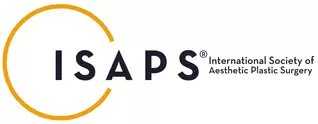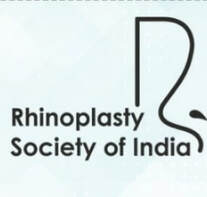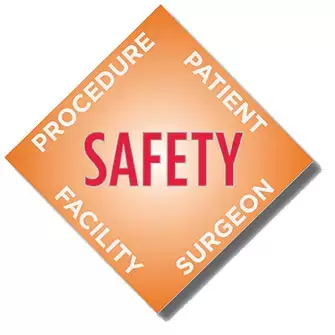|
Aging is universal. It is easy to spot an ‘aged’ look. Even though an individual may lead an active lifestyle these changes may give a tired and exhausted appearance. Cosmetic surgery can help reverse many of these signs of aging. This results in a more rested and youthful look. Anti-aging procedures are now popular than ever before. Plastic surgery for the retirees (above 65) has increased by almost 80% in the US over last 10 years.
Aging-related changes in face and body: Aging comprises of changes in our skin and deeper layers of the body. Thinning of skin is a commonly seen change during aging. The activity of the underlying muscles of the face results in folds and wrinkles of the overlying skin. There is laxity of the supporting ligaments of the face. This leads to the descent of the various ‘highlights’ of the face. Aging is also associated with loss of volume of fat compartments of the face. Loss of fat results in a hollowed out and tired looking appearance. Aging changes also involve the bones. The relative contribution of each of these factors varies among individuals. Anti-aging procedures target these changes. Improvement with plastic surgery results from restoration of many of these tissues to their previous position. They act by the addition of volume, strengthening of weak ligaments and removal of excess skin. As the severity of each of these changes varies, the anti-aging procedures should be modified accordingly. In other words, anti-aging treatments are customized on the basis of findings in the individual. Anti-aging procedures: Anti-aging procedures vary in invasiveness. They range from the office procedures such as Botulinum toxin injections with almost no downtime to the more invasive surgical lifts. The invasive procedures are also associated with longer lasting and more dramatic results. The more commonly performed anti-aging procedures include the following: 1. Botulinum toxin injections: These are agents which when injected underneath the skin relax the facial muscles. This way, they decrease the severity of the wrinkles. They are especially useful for the treatment of wrinkles of the forehead and those around the eyes. After the procedure, an individual can return to work. Their effect lasts from six months to twelve months. Botulinum toxin injections are popular among individuals in their thirties and beyond. 2. Filler injections: As we become older the dermis of our skin becomes thinner. Filler injections augment the deeper layers of the skin. They help improve wrinkles and creases between the eyebrows, nasolabial folds, around the eyes and the lips. The filler is injected under local anesthesia. Their effects last depending upon their constitution. Hyaluronic acid is a popular temporary filler. Their effects last approximately one year. An individual can get back to work soon after the procedure. Filler injections are common in individuals in thirties and older. 3. Blepharoplasty: The area around the eyes are among the earliest to get affected by aging. The changes include loose folds of skin, the appearance of bags in the lower eyelid, and, hollowing of the upper lid. During blepharoplasty, the plastic surgeon, removes the excess skin and fat and ligaments such that it results in more pleasing and youthful contour. Blepharoplasty is commonly done in individuals older than 40. They are day care or short stay procedures and do not require prolonged hospital admission. 4. Facelift: We are familiar with the changes which occur to our face and neck with advancing age. These external changes are secondary to changes which occur in the skin, fat, ligaments, muscles and facial skeleton. It is possible to modify many of the changes in the tissues. This results in a more alert and relaxed appearance. During a facelift, the surgeon, makes incisions hidden in the hairline and the naturally occurring grooves around the ear. The deeper layers of the face are repositioned to counteract the descent which occurs with aging. The lax ligaments are strengthened and may be combined with augmentation of the fat compartments. The excess skin is trimmed away to treat the laxity of the skin. A facelift is performed under general anesthesia or local anesthesia with sedation. It is a short stay procedure. A facelift rejuvenates the middle and lower parts of the face. A facelift can also be combined with a neck lift. A neck lift addresses the loose bands of the neck. A facelift is usually performed in those older than 40. Many variations of the procedure are used depending on the clinical features of the individual. 5. Liposuction: We may develop fat deposits which are resistant to diet and exercise. Liposuction helps in removal of such fat deposits with the help of thin tubes inserted under the skin. The fat is aspirated with the help of vacuum. The aspirated fat can be used as a graft for improvement of the contours elsewhere in the body. Liposuction is a good modality to improve the contours of the body when it is combined with appropriate diet and exercise. The procedure is performed under local anesthesia with sedation or under general anesthesia. It is sometimes a part of another procedure such as facelift, gynecomastia correction or tummy tuck. Liposuction is carried out as a daycare or a short stay procedure. This is a commonly performed procedure even among the younger age group 6 Breast procedures: Breast lift: Breasts are prone to changes which result from aging, pregnancy, and lactation. It is associated with loss of the youthful contours and descent of the nipple and areola. During a breast lift, the surgeon repositions the breast tissue and the nipple areola complex. Incisions are placed around at the junction of the pigmented and non-pigmented skin around the areola and extend inferiorly towards the groove on the undersurface of the breast. A breast lift is performed under general anesthesia and is a short stay procedure. Breast augmentation: This is performed in individuals who desire an increase in the volume of the breasts. This is achieved by means of implants placed through small incisions on the undersurface of the breast. The implants rest behind the breast tissue. Modern silicone implants are safe and do not impair the ability of a woman to lactate. Breast augmentation is performed as a daycare or a short stay procedure. Breast reduction: In some individuals breasts increase in volume with aging, pregnancy, and lactation. Disproportionately large breasts can result in symptoms such as a backache and, skin changes as a result of maceration of the skin. In addition, this can result in the affected individual being embarrassed to appear in public. Breast reduction is carried out under general anesthesia. Incisions are placed at the junction of pigmented and unpigmented skin around the areola and extend inferiorly towards the undersurface of the breast. 7. Tummy tuck: Aging results in changes in the abdomen such as decreased tone and, excess fat and skin especially in the lower part of the abdomen. Other signs include visible striae as a result of pregnancy and hernia at the site of any previous surgery. Tummy tuck is designed to correct the excess skin and fat deposits found underneath the skin. It also tackles the loss of tone of the fascia around the muscles. The procedure is modified depending on the extent of changes found in the individual. The incision is placed in the lower part of the abdomen such that the scars can be hidden within undergarments. The midline structures such as the fascia are brought together in the midline to improve the tone of the abdomen. Treatment of hernias in the midline are performed during this step. Liposuction is performed on the areas which are not directly undermined during the raising of the abdominal flaps. Excess skin and underlying fat are removed to give a smooth contour to the abdomen. The umbilicus is sometimes repositioned higher at an appropriate level. Abdominoplasty is performed under general anesthesia. It is carried out as a short stay procedure. Abdominoplasty is performed in individuals who have completed their family. It is performed in individuals older than thirty. Anesthesia and recovery following cosmetic surgery procedures: Due to advances in anesthesia, these cosmetic procedures are safer than ever before. Cosmetic surgery is safe with low morbidity in otherwise healthy individuals. However due to the presence of significant comorbidity, the risk of certain procedures may increase. Most of the surgical procedures in cosmetic surgery are performed as a day care procedure. Patients can return home the same day or after a short stay in the hospital. They can return to work after office procedures like injection therapy. Other procedures like liposuction and breast procedures require an individual to take leave from work for a week. At the end of a week, they are usually able to return to work and resume light activities. Heavy exertion is restricted for a period of approximately one month. In general, the recovery from cosmetic surgery depends on the extent and invasiveness of the procedure. Cosmetic surgery does not reduce age. However, it can address many of the aging-related changes and results in a more youthful appearance and increased levels of confidence. In case of any doubts, we would be glad to hear from you.
Comments are closed.
|
AuthorI like to keep it simple. CategoriesArchives
June 2024
Categories |
- Home
-
Cosmetic
- Fat grafting
- Swellings and moles
- Scar revision
- Leukoderma (Melanocyte transfer)
- Hair transplant
- Facial rejuvenation procedures
- Nose job (Rhinoplasty)
- Cleft lip nose correction
- Ear (Otoplasty)
- Lip reduction
- Breast augmentation
- Breast reduction
- Tuberous breasts
- Axillary breasts
- Gynecomastia
- Liposuction
- Brachioplasty (Arm contouring)
- Abdominoplasty (Tummy tuck)
- Female genital rejuvenation
-
Reconstructive
- Contact
- Blog
- Home
-
Cosmetic
- Fat grafting
- Swellings and moles
- Scar revision
- Leukoderma (Melanocyte transfer)
- Hair transplant
- Facial rejuvenation procedures
- Nose job (Rhinoplasty)
- Cleft lip nose correction
- Ear (Otoplasty)
- Lip reduction
- Breast augmentation
- Breast reduction
- Tuberous breasts
- Axillary breasts
- Gynecomastia
- Liposuction
- Brachioplasty (Arm contouring)
- Abdominoplasty (Tummy tuck)
- Female genital rejuvenation
-
Reconstructive
- Contact
- Blog
You can leave us a comment using the contact form below.
We shall get back to you at the earliest.
We shall get back to you at the earliest.
Links
- Face procedures | Rhinoplasty, Otoplasty, Lip reduction, Fat grafting
- Body procedures | Gynecomastia , Breast reduction, Abdominoplasty, Brachioplasty, Liposuction
- Skin procedures | Scar revision, Moles, Leukoderma surgery
Let's be friends !
Follow us at Facebook and Twitter.
Follow us at Facebook and Twitter.
© 2024 Amicus Clinic (Plastic Surgery Centre, Trivandrum). All rights reserved.
 RSS Feed
RSS Feed



